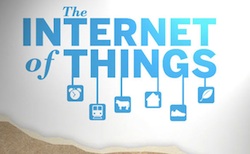IoT: The Crippling Effect of Outdated Connectivity

While hardware and cloud environments have made it easier for companies to advance their IoT infrastructures, this has also brought to the forefront a glaring, remaining challenge: connectivity. A survey conducted by IoT vendor Plat.One (acquired last September by SAP) found that, along with protocols, connectivity remains the leading impediment to deploying IoT networks.
According to Gartner analyst Ganesh Ramamoorthy in Economic Times CIO, “Through 2018, half the cost of implementing IoT solutions will be spent integrating various IoT components with each other and back-end systems." These challenges are putting substantial limits on organizations’ ability to adopt, scale, and maintain IoT systems, contributing to Ramamoorthy’s troubling statistic that, on average, eight out of 10 IoT projects fail before they’re even launched.
According to IoT researcher Ahmed Banafa, organizations building IoT networks face a number of hurdles, including configuring, securing, and managing massive numbers of devices, navigating compatibility and constraints of pre-existing communication protocols, power constraints, and more.
To effectively address these challenges and facilitate control of an IoT installation, a comprehensive, unified approach to connectivity is required that offers visibility of every device in the system.
The Maturing IoT Cloud and Sensor Markets
According to a study conducted by BCC Research in 2016, the market for sensors worldwide had reached $123.5 billion. Manufacturers have responded to rising demand for sensor data with more affordable, reliable, versatile, smaller and specialized sensors capable of operating in more environments. For example, under development are medical sensors capable of implantation in the human body, that will flex to mold to tissues, and interface with the human nervous system; these have huge potential for basic research and treatment. Journals like Sensors catalogue the dizzying array of use cases that can be met with today’s sensor technology.
Paired with this sophisticated market for sensor components is expanding availability of public cloud platforms on which IoT application layers can be built. Google, Microsoft and Amazon each offer pre-built cloud-based IoT platforms pre-built for IoT applications. Before they were available, companies had to develop ad-hoc, home grown solutions to route data to the right source for analysis, presenting additional IT hurdles.
Building IoT Connectivity to Last
If you’ve tried a do-it-yourself approach to IoT connectivity, you’ve faced a litany of challenges, from being incredibly labor intensive to becoming quickly out of date. Worst of all, you end up with an inflexible connectivity architecture that must be manually maintained and can’t scale with your business’s expanding sensor network. In order to sustainably connect scaling hardware with a scaling application layer, organizations must adopt technology that includes:
- Zero configuration requirements to get systems up and running quickly and allow them to scale smoothly
- Over-the-air (OTA) programming for updates, device commissioning and decommissioning, and tracking cloud and channel integrations. This level of integration offers maximum visibility of the health and status of an IoT network
- Interoperability among hardware across the entire IoT stack
- Wireless and secure data routing infrastructure that can be added to any existing IoT application architecture
These are critical considerations at a time when IoT technical talent can be hard to find, hire and retain. The strain that routine maintenance and mundane manual IoT tasks puts on support staff can culminate in project failure. Building a scalable, low-maintenance connectivity architecture can make the difference between success and failure of the entire IoT project and your ultimate business goals.
Amir Haleem is CEO of Helium.











